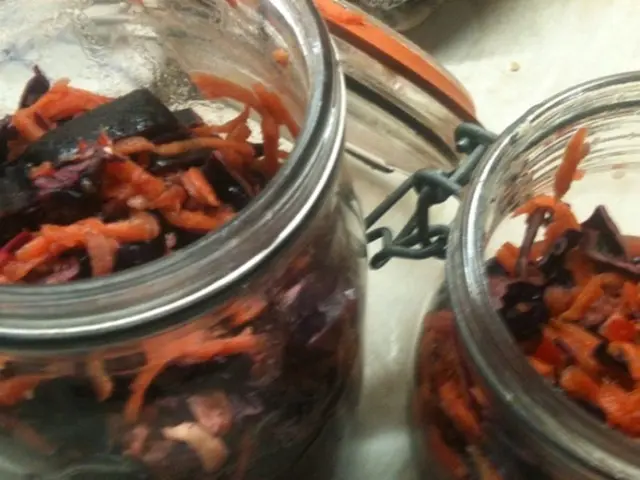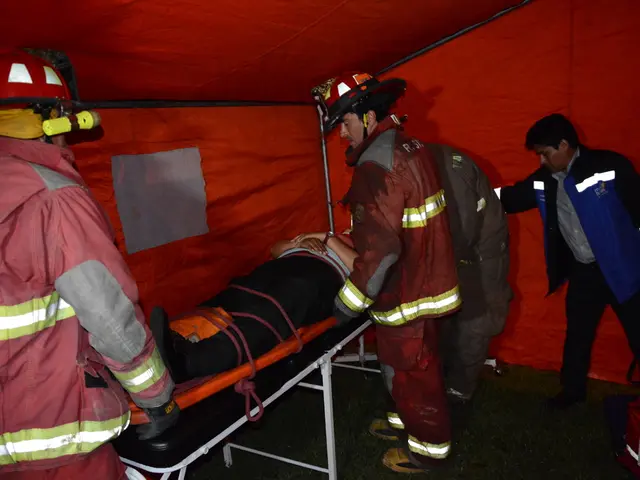Abdominal Strain: Examining Its Nature and Strategies to Alleviate Discomfort
Running, Basketball, or a Quick Jog – When a Side Stitch Strikes!
Expereince that agony? You're engaged in physical activity – be it a game of basketball, a run, or a brisk walk – when a sharp pain attacks your ribcage. It can be so painful that it forces you to halt. They're often called side stitches, and while they're common, they're usually nothing to fret about.
Cleveland Clinic, a renowned non-profit academic medical center, provides insights on these pesky side stitches. Christopher Travers, an exercise physiologist, dives into the nitty-gritty of these side stitches and explores ways to prevent them.
A Closer Look at Side Stitches
A side stitch is essentially a painful spasm of the diaphragm – a powerful muscle separating your chest from your abdomen. You'll typically feel a persistent pain right under your ribs, or a jabbing sensation on your side. In certain cases, you may feel a sharp pain, pulling, aching, or cramping on both sides of your waist.
Scientific evidence supports the prevalence of side stitches among athletes. In a study involving 965 participants, side stitches affected 75% of swimmers, 69% of runners, 62% of horse riders, 52% of aerobics participants, 47% of basketball players, and 32% of cyclists. So, if you're active or working out, chances are you'll experience a side stitch at some point. Even walking upstairs can trigger one.
When Does This Happen, and Why?
The exact reason behind side stitches remains somewhat of a mystery. According to Travers, the leading theory revolves around increased blood flow to the liver and spleen, causing the diaphragm to contract involuntarily. Another hypothesis suggests that pain is caused by internal organs pulling down on the diaphragm. However, this doesn't quite explain why side stitches occur frequently in swimming.
One possible explanation could be eating before engaging in physical activity, as your body redirects blood to the stomach for digestion, potentially reducing blood flow to the diaphragm. Additionally, electrolyte imbalances (such as those of calcium, potassium, and sodium) might contribute to side stitches.
Minimizing Those Side Stitches
Experiencing a side stitch can be frustrating, so it's helpful to know what you can do to alleviate the pain:
- Slow Down: Whether you're in the midst of a sprint or just speeding around the block, slow your pace.
- Deep Breathing: Take slow, deep breaths, allowing your muscles time to relax.
- Locate and Apply Pressure: Identify the source of the pain and apply pressure using your fingers to reduce discomfort.
To prevent side stitches, Travers suggests the following guidelines:
- Watch What You Eat: Try not to eat for at least two hours before physical activity, and limit foods high in sugar.
- Warm Up: Spend five to ten minutes stretching, focusing on your sides.
- Regulate Your Breathing: Breathe in through your nose and out through your mouth during exercise.
- Stay Hydrated: Drink water throughout the day in moderate amounts, but avoid consuming excessive amounts right before exercise, as it can place extra pressure on your diaphragm.
Overall, side stitches are a common phenomenon that usually doesn't impact daily life. Following these prevention tips can help keep those pesky pains at bay.
"Take note of your body and plan your exercise routine accordingly," says Travers. "Listen to your body's signals."
- The prevalence of side stitches is evident in various sports and physical activities, such as swimming, running, basketball, and even walking upstairs, according to a study involving 965 participants.
- To reduce the chances of experiencing a side stitch during health-and-wellness activities like fitness-and-exercise, it's recommended to avoid eating for at least two hours before engagements, limit high-sugar foods, warm up by stretching for five to ten minutes, focus on regulating breathing, and stay hydrated.
- When a side stitch does strike, slowing down, performing deep breathing exercises, and locating and applying pressure to the painful area can help alleviate the pain, as suggested by Christopher Travers, an exercise physiologist from Cleveland Clinic.








